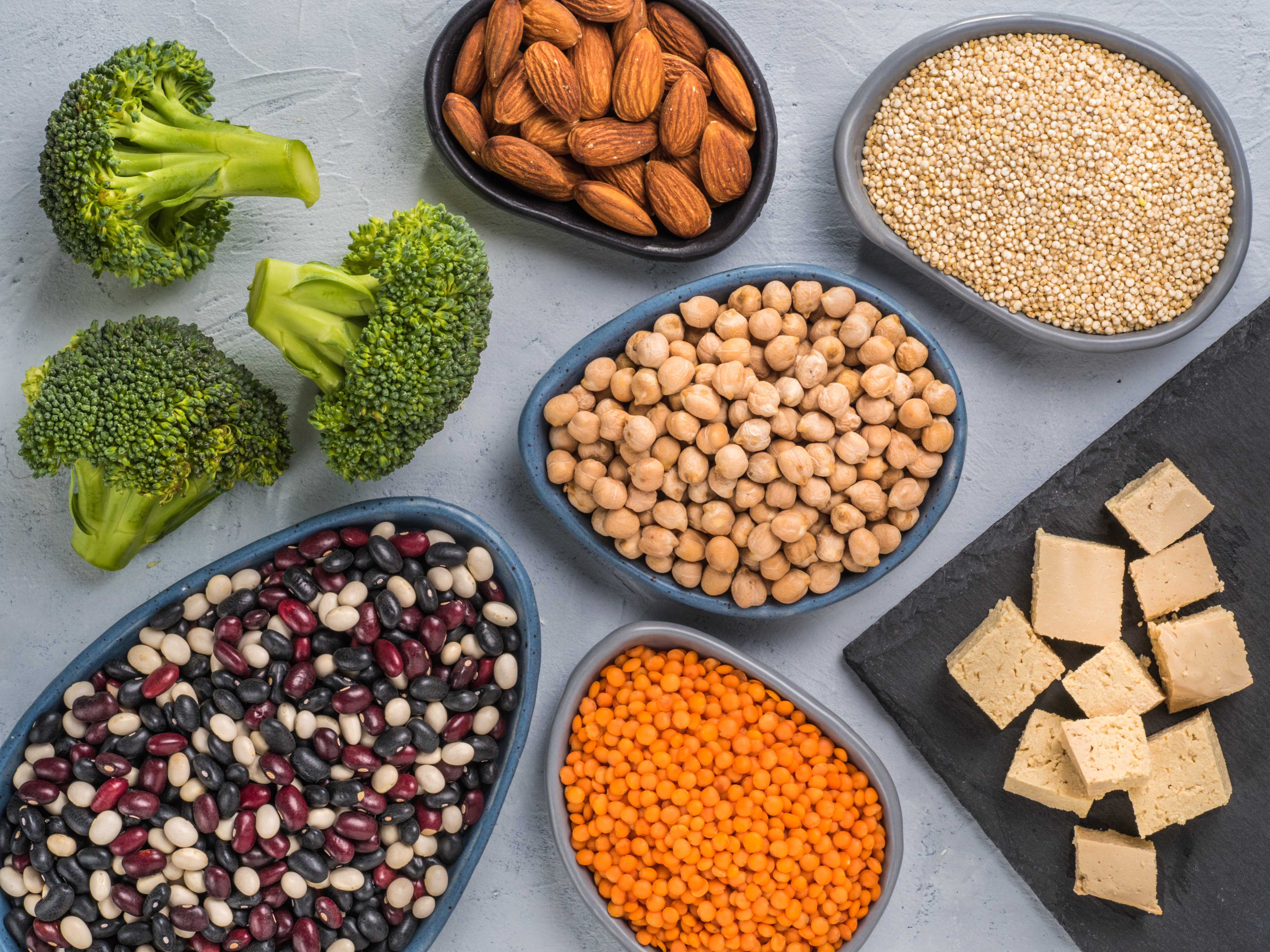If you’ve chosen to go veggie or vegan, building muscle mass may seem a little trickier without meat
To avoid undoing all your hard-earned efforts in the gym, we’ve put together some tips on gaining strength and size while living a plant-based lifestyle. This isn’t prescriptive, but if you’ve opted to go down that particular path, help is at hand.
Blend protein sources
With meat and other animal proteins, you can make do with one source per meal. Chicken breast, salmon fillet, lamb chop – you know what goes on the grill. Each of these typically contain a bare minimum of 20 grams of protein per serving.
Veggie meals can’t rely on one single source of protein to hit that number. If you were to rely on one single kind of veggie protein, you’d have to eat huge amounts. You probably don’t get long enough a lunch break to wolf down that much broccoli, right?
The trick is in combining plant proteins together. A veggie stir-fry, for example, could incorporate a variety of vegetarian and vegan-friendly protein sources:
- Lentils
- Chickpeas
- Quinoa
- Tofu
- Kidney Beans
- Nuts and Seeds
A combination of the above alongside your usual veggies provides sufficient protein and also keeps your meal interesting.
Here is some more dietary guidance from Lloyd Bridger, co-founder of LDN Muscle:
Mushrooms
“Although mushrooms are fairly low in micronutrients, they are also low in calories and some have textures similar to that of meat. While we aren’t saying they are going to cure your meat cravings, a mushroom burger is better than no burger at all.”
Quinoa
“When someone mentions quinoa, it probably conjures up visions of bland, overpriced salads from that organic vegan, North London community-eatery you were forced to go to once.
“However, quinoa is a very versatile grain which is high in protein, making it a great replacement for wheat or rice to bolster the protein content of a meat-free meal. It can also be used to make some delicious desserts.”
Lentils
“With around 10 grams protein per serving, lentils are great for adding bulk to meat-free stews and salads.
“They contain good amounts of soluble fibre, which will help manage cholesterol levels and steady the absorption of sugar into your bloodstream. Do however be wary in trying to get all your protein from lentils, as they are fairly high in calories.”
If you haven’t gone full vegan, eggs and dairy make fine protein sources.
Free range eggs
“Eggs are a great source of easily digestible protein and are also a ‘complete protein’ – meaning they contain all the amino acids essential for the body to function – something that most plant-based proteins do not.
“Eating whole eggs every day will not contribute to unhealthy cholesterol levels if you maintain a healthy, calorie-balanced diet and do not suffer from any diseases.”
Dairy
“The ethics of certain aspects of this industry are very questionable, but cruelty-free dairy products can be great protein sources.
“Yogurts and cheeses are readily digestible, complete protein sources and are also high in vitamin D, which is important for maintaining a whole host of healthy functions.”
You don’t always need to have meat, and dishes like this can certainly tick all the boxes you need from a muscle-building meal. However, animal proteins are rich in micronutrients such as vitamin B12 – vital for natural energy function. To avoid missing out, some flexibility with food is best.











































